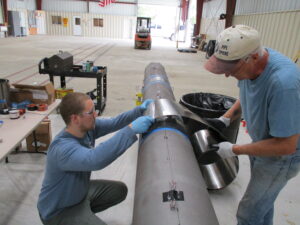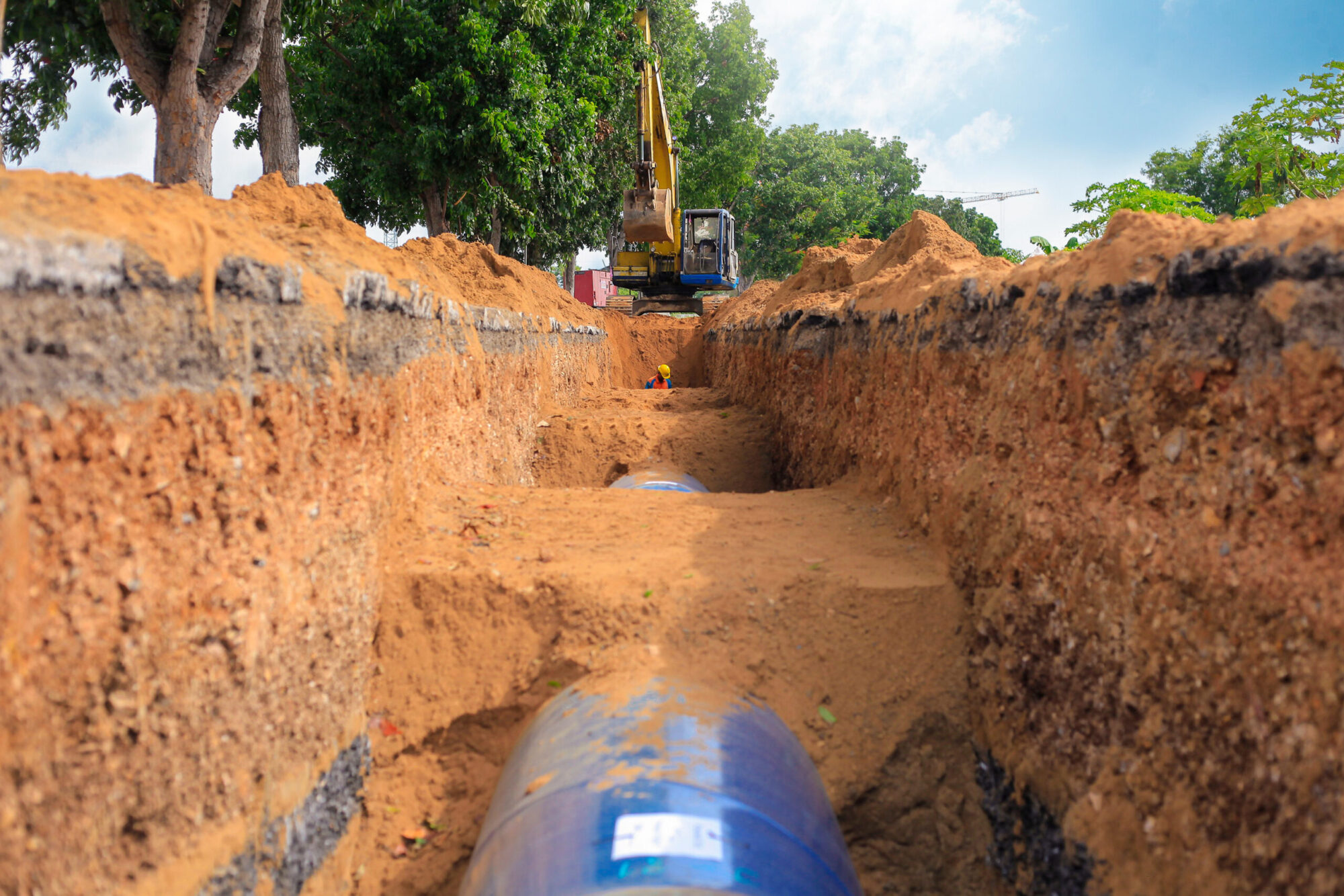Question: How does Pipe Spring™ work?
Answer: The laminated steel sleeve reinforces the existing pipe.
For metal loss defects: The thinned section of the existing pipe will tend to display strain and will begin to bulge and yield in the radial direction due to internal pressure. A threat to the pipeline integrity exists. With a properly installed Pipe Spring™ sleeve, the thinned ligament utilizes the high compressive strength filler material to transfer the load to the laminated steel sleeve. The steel sleeve then shares the stress with the pipe. Metal loss defects cannot bulge and yield. Metal loss defects are effectively mitigated.
For integrity enhancement applications: Wet uncured filler material is placed around any weld or protuberance from the pipe surface. The thin layer steel is wrapped around then pipe with the adhesive system applied between each layer. Out-of-round or ovality of the pipe is addressed by the conformity of the thin layer steel and the filler. The system quickly transfers load to the resultant steel sleeve. The engineering parameters of the steel sleeve augmentation can be calculated for hoop and axial strength. This can be added to the known minimum value of the pipe (perhaps recent known pressure if the grade of the pipe is unknown). The effective fracture toughness of the laminated steel sleeve is extremely high. The reduction in stress via the augmentation and the fracture toughness of the augmentation can be utilized for calculations related to fracture mechanics. The laminated steel sleeve augmentation provides excellent mitigation of potential future third-party mechanical damage.
Question: What integrity threats does Pipe Spring™ address?
Answer: Pipe Spring™ is a modern version of a “Type A” sleeve with the welding eliminated and adhesive utilized to hold the sleeve (coil) together. The list of integrity threats which are properly addressed by a “Type A” sleeve is also the appropriate list for Pipe Spring™. In addition, Pipe Spring™ is adhered to the pipe via a high strength adhesive. Effective axial strength can be calculated as the lesser of the adhesive bond strength to the pipe or the axial strength of the steel sleeve for the appropriate cross-sectional area. Pipe Spring provides axial strength to mitigate threats with an axial component.
